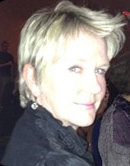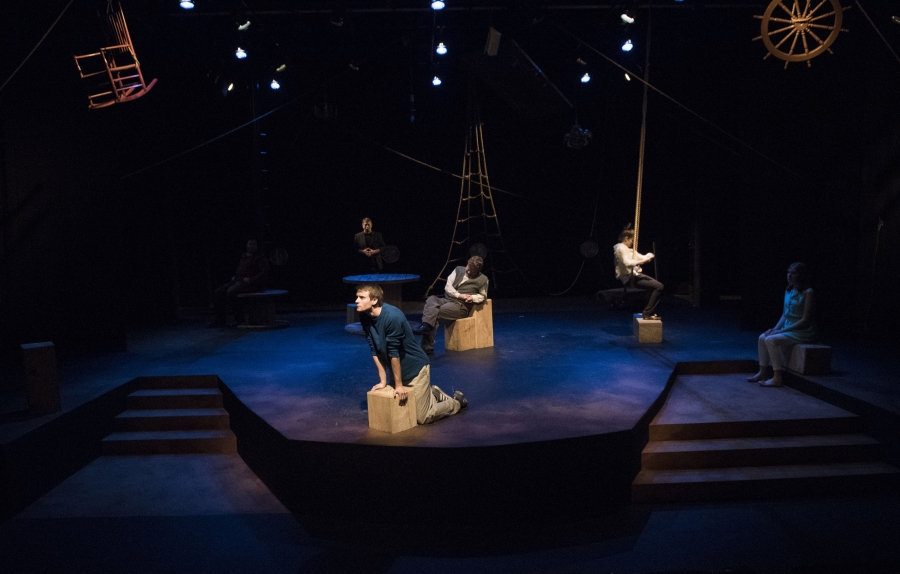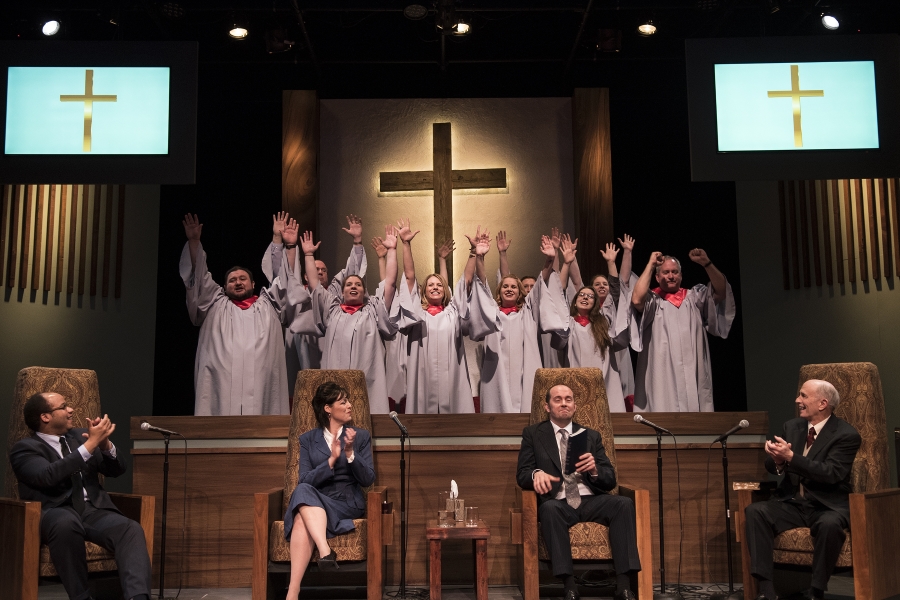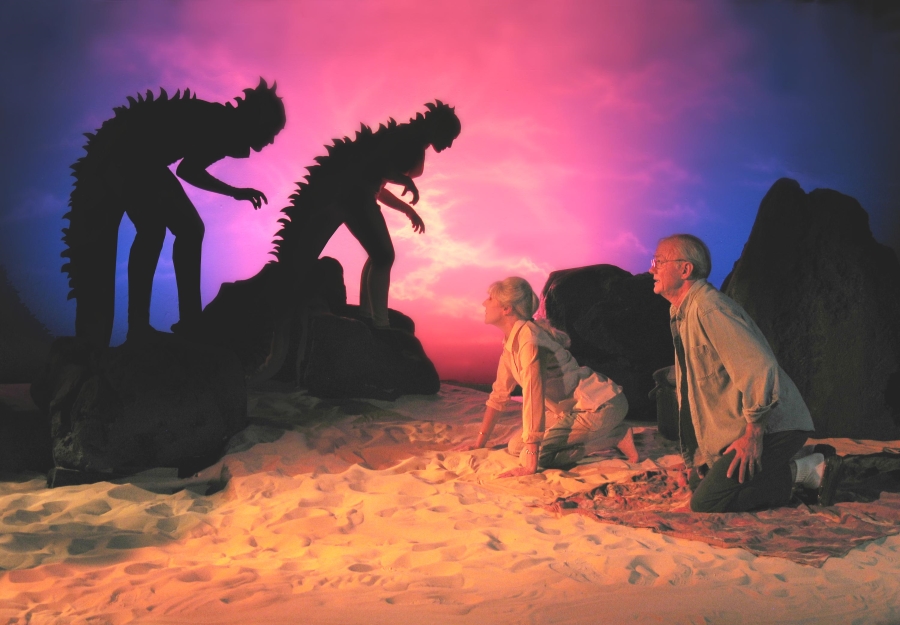OMAHA, NEB.: The BLUEBARN Theatre is nestled along the Missouri River near the border of Nebraska and Iowa. The theatre, now in its inaugural season at its first permanent home, brings contemporary theatre to the largest city in the Cornhusker State. Downtown Omaha is a hub for the performing arts: Hust down the road from the BLUEBARN Theatre is the Dreamland Ballroom Irish Theater, and the historic Orpheum Theater is one mile north.

We caught up with artistic director Susan Clement-Toberer via email to learn more about the BLUEBARN Theatre’s new space and leadership structure.
Who founded BLUEBARN Theatre, when, and why?
The BLUEBARN Theatre was founded in the 1988 by Nils Haaland, Kevin Lawler, Hughston Walkinshaw, and Mary Theresa Green. Three of the four of these founders were graduates from the Conservatory of Theatre Arts and Film at the State University of New York at Purchase. Since that time, BLUEBARN has grown into Omaha’s premiere professional contemporary theatre company.
Tell us about yourself and your connection to the theatre.
I stepped in to become the producing artistic director in 2001. Originally from Seattle, Wash., I attended SUNY Purchase and graduated in 1988 alongside the company members who founded BLUEBARN. I moved to Omaha and joined the company in 1989—its second year—because I knew our deeply shared artistic aesthetic, which was developed during our four years of training together, would be fulfilling and compellingly creative at the same time.
The company was started and run by consensus during the first years, [which] created a great melting pot for exciting new ways to create. Down the line, it also became extremely challenging to us as artists, as well as to the growth of the company. It seems amazing to look back and realize—whether it was by design, fate, or necessity, the original core BLUEBARNers ended up passing the leadership torch from one to another over the past 27 years, thus keeping it in the Purchase family. When one of us would burn out from running the theatre, another one us just happened to be in place where we could step in and take over to continue guiding and growing the theatre. This process ensured the artistic quality and continues today.
What sets your theatre apart from others in the region?
After 26 years in a variety of rental spaces, the BLUEBARN built and opened its own 96-seat theatre in the summer of 2015. BLUEBARN’s one-of-a-kind convertible space is an architectural art piece that boasts the beautiful work of four regional artists, a host of reclaimed materials, and a stunning urban façade. The indoor/outdoor capabilities of the venue are unlike any other theatre in the country, and have garnered attention from the theatre and architectural industries locally, regionally, and nationally.

Who is your audience?
Our audiences are fearless, intelligent, loyal, and adventurous! I once received a letter from a longtime patron saying they “did not like” the play they just experienced at the BLUEBARN (Bug by Tracy Letts), and then he wrote:
But then as I think about it… Why not? That is the confusing part and thus good theatre at times should make one uncomfortable and it’s so easy to dismiss as that as “I don’t like it.” At first I thought it was because I couldn’t relate to the characters, but I am realizing in so many ways I can. So keep making us uncomfortable. Keep delivering us well-directed, -acted, and meaningful theatre.
It’s amazing when you have an audience member that inspires you unexpectedly.
Tell us about your favorite theatre institution other than your own, and why you admire it.
My favorite theatre was Theatre de la Jeune Lune located in the Twin Cities. Their work was intelligent and inspired. A great loss when they closed their doors. I have been attending the Humana Festival at Actors Theatre of Louisville for about four years now and love the diverse voices of playwrights they introduce to the world.

How do you pick the plays you put on your stage?
The BLUEBARN’s mission is to provoke thought, emotion, action, and change through daring and innovative theatre. When we start to read plays for our season, we start in a very methodical way, always seeking to serve the mission. But truth be told, we choose our seasons the way we create our work—on gut instinct.
What’s your annual budget, and how many artists do you employ each season?The BLUEBARN’s annual budget for the 2015–2016 season is between $400,000 and $500,000. Which is crazy to say since we started with $75 and a white sheet. We employ roughly 80 creatives a year from Omaha, Neb., and the surrounding region.
What show are you working on now? Anything else in your season you’re especially looking forward to?
We recently closed our production of The Christians by Lucas Hnath and are in rehearsals for Heathers: The Musical, with music, lyrics, and book by Laurence O’Keefe and Kevin Murphy. I am looking forward to announcing next season.

Strangest or funniest thing you’ve ever seen (or put) on your stage?
The strangest thing ever on our stage? Well, let’s say a glowing blue phallic symbol, a frozen sheep, and a rock ballad about true love all at the same time. It screams Christmas show, doesn’t it?
What are you doing when you’re not doing theatre?
What am I doing when I’m not doing theatre? I’m sorry, I don’t understand that question. Oh! Mexico, on a beach comes to mind.
What does theatre—not just your theatre, but the American or world theatre—look like in, say, 20 years?
Storytelling in unimaginable ways. I would be disappointed if I could imagine 20 years from now how storytelling would look onstage. The one thing that I do know is that the communal experience of audience and actor and story will continue in the future—no matter the form.


